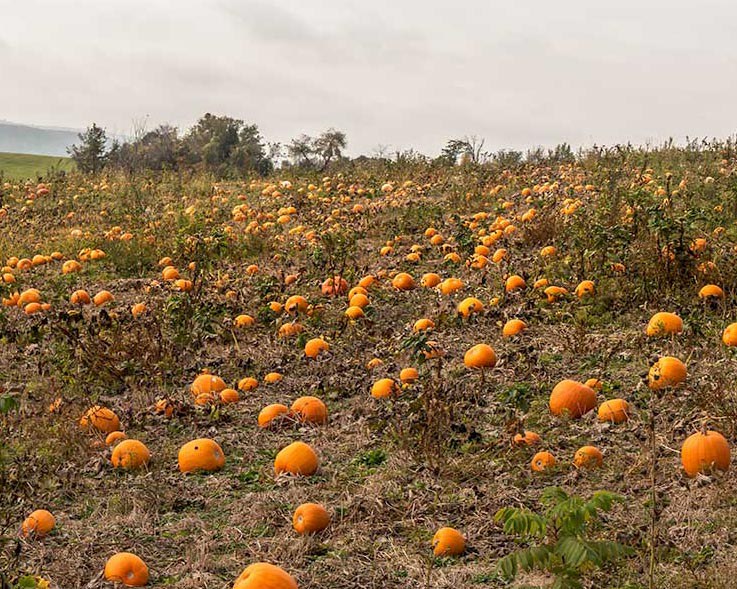Posted: July 12, 2018
This is the 8th of eleven short news articles written by students, during the professional development class. This year we had the students interview their advisor(s), in an effort to help them better understand the larger context of their projects.
Evolution and the Environment: Studying Bees in a Changing World
By Shelby Kerrin Kilpatrick
Can you imagine an autumn market without large, bright orange pumpkins, multicolored squash, and funky-shaped gourds? Today, we may take these captivating cucurbits for granted, but their diversity is the result of thousands of years of both natural and human-driven selection. Human activities do not always hurt other species. Here at Penn State, Dr. Margarita López-Uribe and Dr. Heather Hines are interested in understanding how our long-term cultivation of these charismatic plants has influenced the biodiversity of their specialist pollinators, the squash bees!
Bees are known for their intimate mutualism with flowering plants. However, when humans began cultivating crops such as cucurbits, the landscape changed through the creation of new habitats for some insect species, but less habitats for others that were not adapted to agricultural varieties. Plant traits that farmers favor have been selected for over time, primarily their crops' fruits and vegetables. When any plant trait changes, the flowers these products originate from may change too. This can affect bee species' abilities to pollinate flowers, especially those that need specific floral cues to locate and collect pollen. Crops have also been grown in greater densities and spread far from their native ranges. Increasing pest resistance is also a concern for growers as these species take advantage of plentiful, nutritious food and other resources.
Thousands of years ago, one of the 22 species of squash bees expanded its range northward from Mexico into the United States as a result of cucurbit domestication by Native Americans. Today, this species is a particularly important pollinator of our cucurbit crops - one that we would not have, had it not "followed the bloom". However, exactly how cucurbit crop domestication has influenced the diversification, distribution, and abundance of the other species of squash bees, is unknown. This is what makes them an ideal model system for studying the effects of agriculture on pollinator species, which, unlike insect pests, have not been studied in this manner.
Squash bees are found only in the Americas and the greatest number of species is in Mexico, where cucurbits got their start and coevolved with the bees before humans entered the scene. By using genetic information to reconstruct the evolutionary relationships between the species of squash bees, we can test how they, their cucurbit pollen hosts, and humans have interacted to result in change in the bees over time. Specifically, aspects of this research will include comparing climatic preferences, morphological characters, and other traits between both the plants and bees, based on the understanding of evolutionary relationships between the bee species.
"Understanding these questions can help us make generalizable predictions about how species are responding to human-driven changes in the environment," says López-Uribe. She further explains that "this [research] is extremely important at this time, when there is a biodiversity crisis." The results of the project will allow us to understand, from evolutionary and ecological perspectives, what makes a particular species successful in altered environments.
We are constantly changing the world we live in, but preserving pollinators and biodiversity remains a critical component in our efforts to sustain our future. The next time you pick out your favorite fall fruit for decoration, bake a tasty pumpkin pie, or see a bee buzzing around a flower, take a moment to consider how those species may have come to be. This bigger picture, as in the case of cucurbits and squash bees, shows that the actions humans take can change the evolutionary trajectories of species and the diversity in the world we share.


